What Is Your Character's Silhouette Telling You?
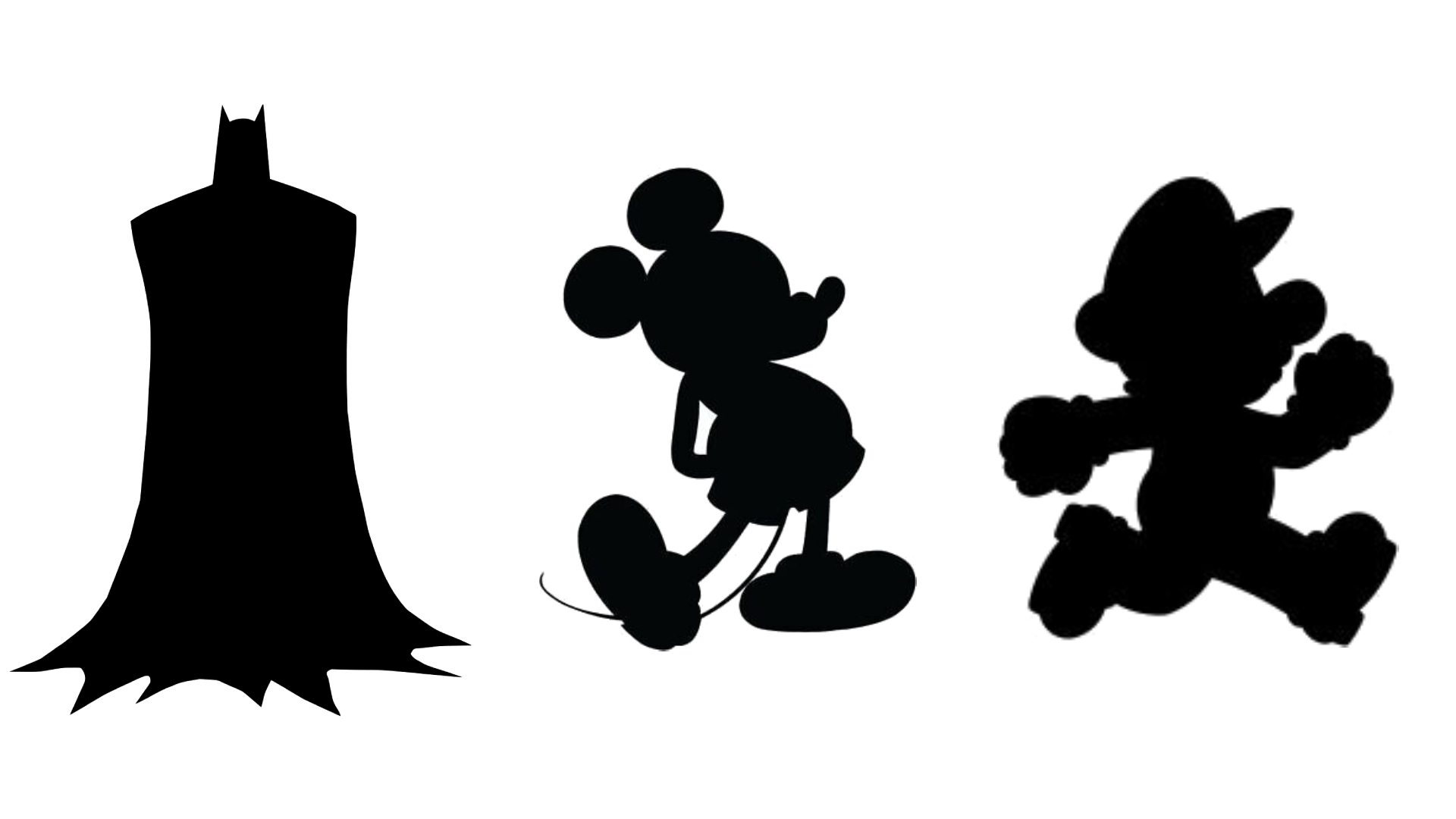

What do Batman, Mickey Mouse and Mario all have in common? 🤔
All these iconic characters strike a strong silhouette. You can instantly recognize them from their blacked-out shapes alone. These silhouettes mean the characters remain clear and readable, whether they’re far away, in low light, or in busy scenes.
Do you want to make more attention-grabbing character designs? Read on—we’re going to discuss the power of the silhouette and reveal how to make yours stronger 🚀
👁️ What Silhouettes Can Tell a Viewer
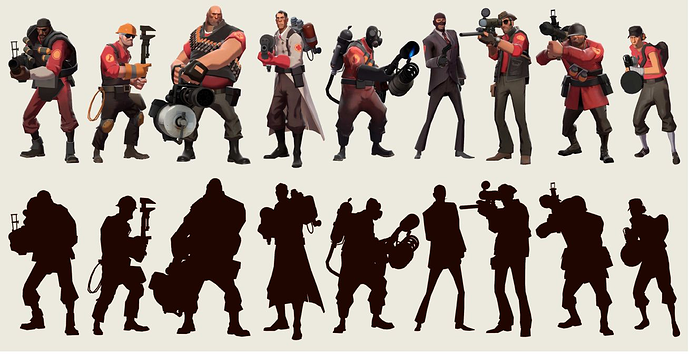
A silhouette can convey all kinds of things about your character: their personality, mood, intent, even their role in the wider story. For example, broad shoulders and a confident pose help indicate a strong, brave hero character 🦸🏻
Be intentional about the shape of a character’s body and the stance you present them in. Try not to get lost in minor details early on. A silhouette alone should convey intentions and feelings—before you fill in the details!
📖 Enhancing Readability
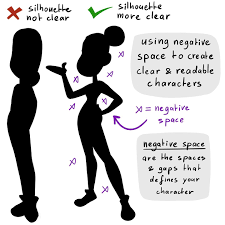
It’s important to ensure that your character’s silhouette is readable—in other words, easy to understand. Making use of negative space will help define their form and features. Create plenty of shapes and gaps around your character’s outline, instead of squashing them up 🤏
When your character’s pose is opened up like this, it’s easier for the brain to figure out what’s going on, even when all the details are filled in. When you’re designing, keep checking the black silhouette of your character to make sure it’s readable!
💥 The Power of Shape Language
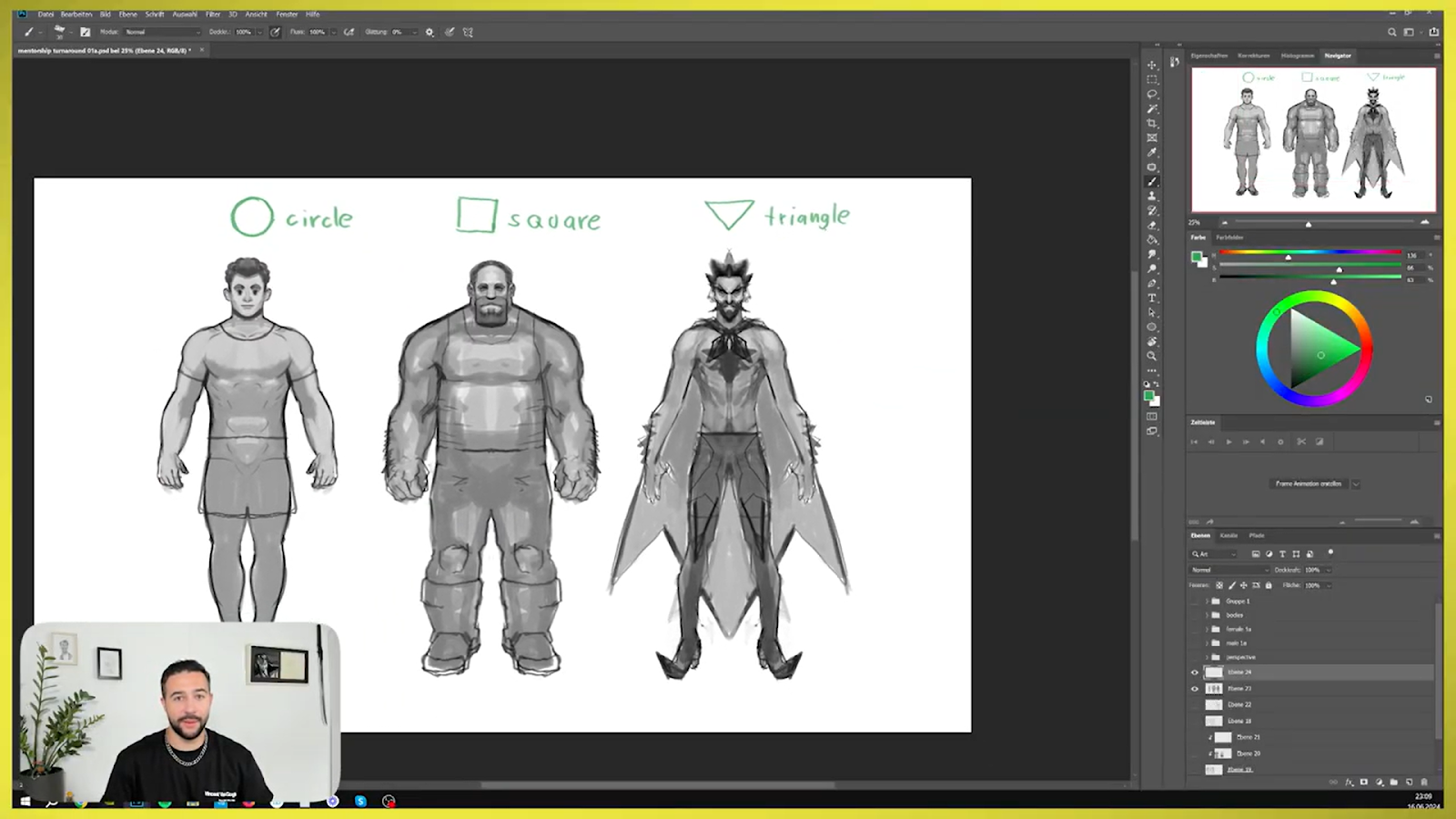
Something that’s essential to convey in a silhouette is shape language. This is a powerful way to communicate your character’s inherent traits by giving the viewer instinctive visual clues. Shape language is widely understood across global cultures, because it taps into the subconscious parts of the brain 🧠
Circles
Circles lack sharp edges, making them feel welcoming and non-aggressive. They have a sense of fluidity and ease. Round characters feel:
- Soft
- Friendly
- Safe
- Gentle
- Warm
- Organic
Squares
Squares are balanced and stable, with rigid edges and straight sides. This makes them solid, inflexible and strong. Square characters feel:
- Resilient
- Strong
- Reliable
- Stubborn
- Slow
Triangles
The diagonal lines and sharp points of a triangle suggest dynamism, movement, and danger. In many cultures, triangle signs are warnings! Angular characters feel:
- Dangerous
- Dynamic
- Fast
- Aggressive
- Powerful
⚖️ Symmetry Versus Asymmetry
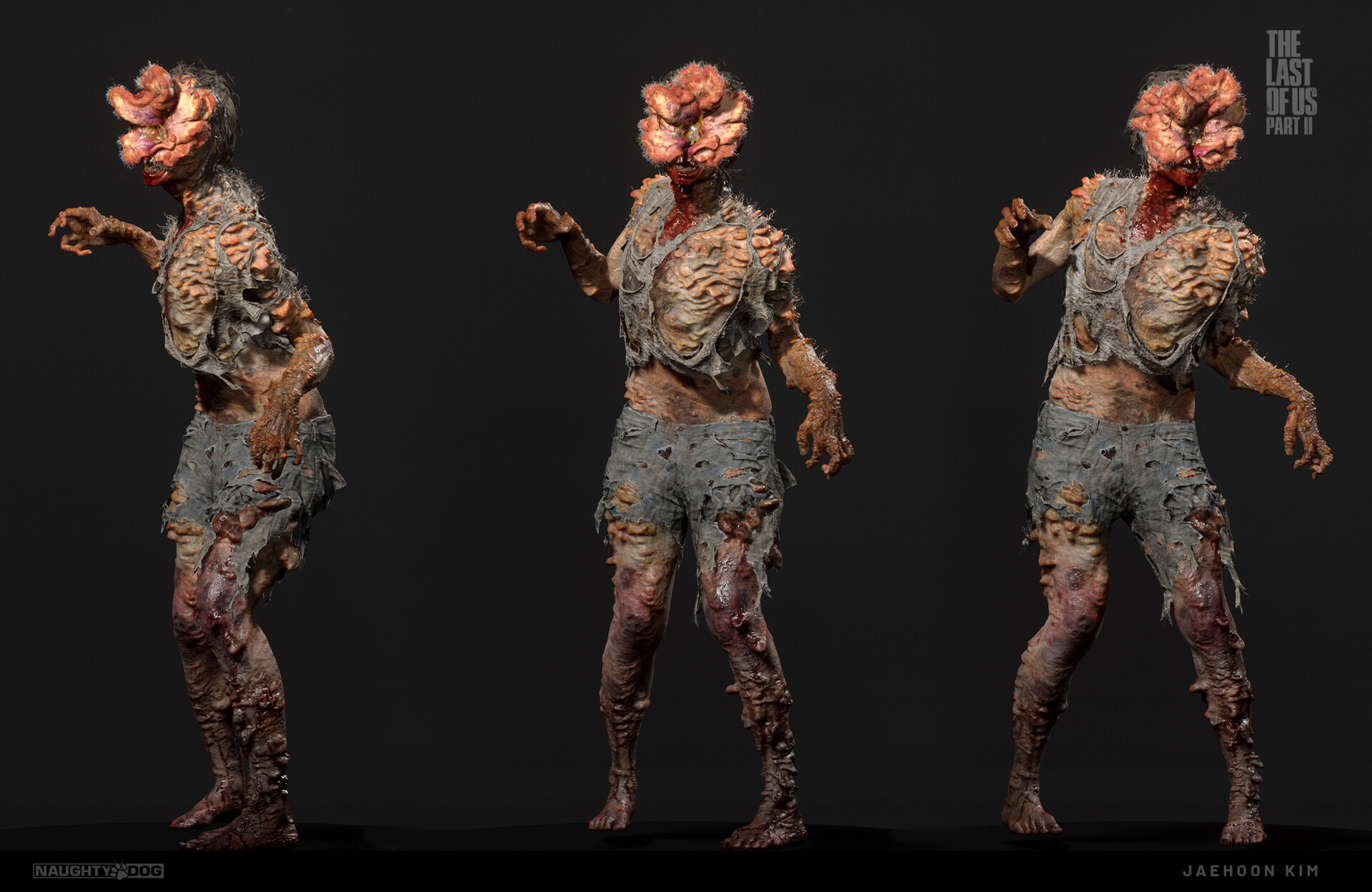
Something else to think about in your character’s silhouette is the concept of symmetry and asymmetry. Symmetrical characters often represent balance, harmony, and order. You’ll often see kings and queens designed very symmetrically, with a lot of straight vertical lines 👑
Asymmetry, on the other hand, represents chaos, unpredictability, and dynamism. Consider the orderly character of a king contrasted with the zombies overrunning his kingdom. Their crooked stances and bedraggled appearance are reflective of their danger 🧟
🪄 Mastering the Golden Ratio
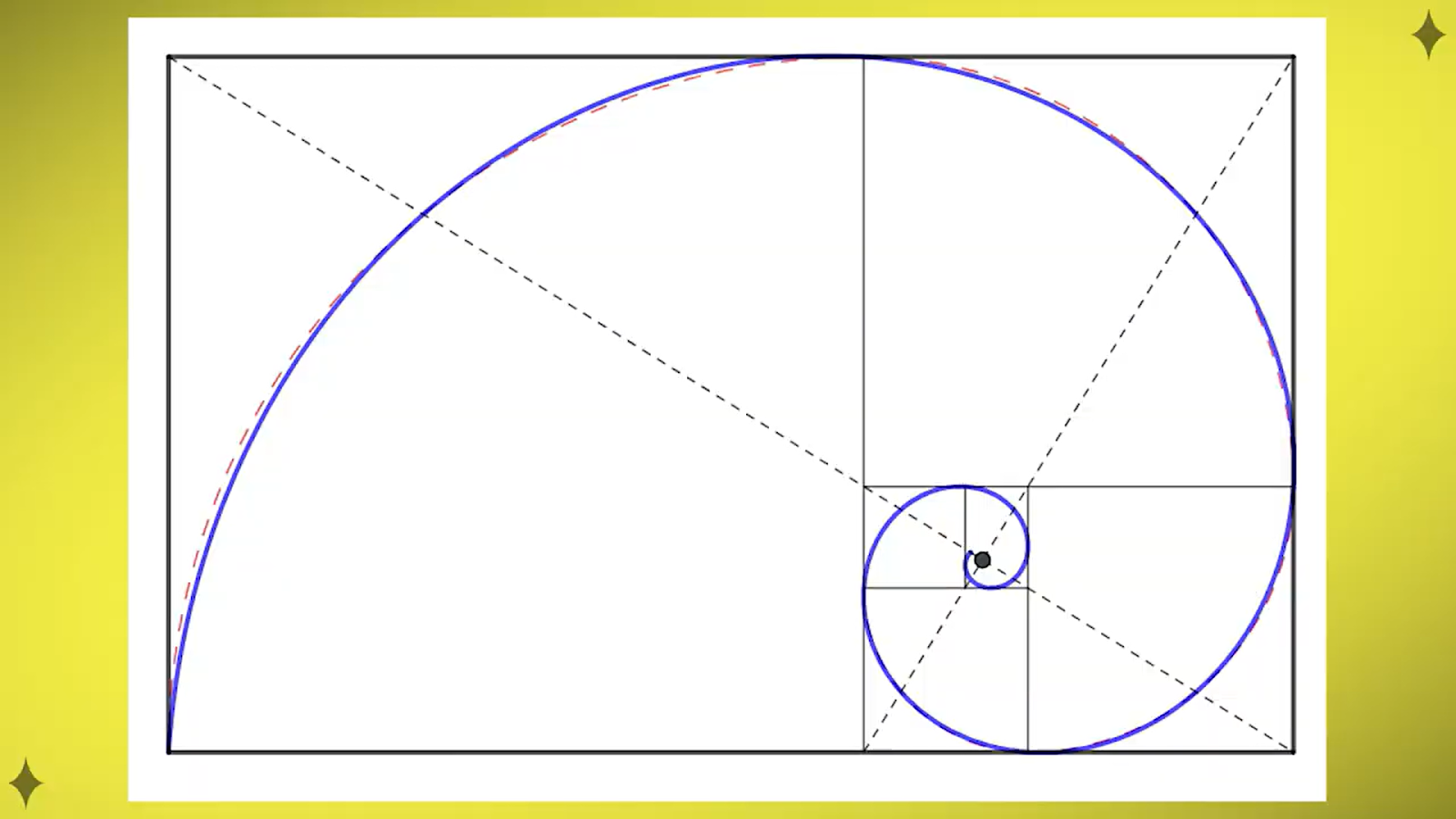
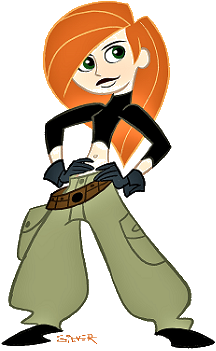
One final thing to consider when designing your character’s silhouette is the golden ratio. You might know it as the Fibonacci sequence or the divine proportion. This ratio is commonly found in nature, and when used in a design, it creates organic and natural-looking compositions.
Don’t be intimidated—simply put, this ratio gives you the ‘small, medium, and large’ components of your character. By giving the viewer areas of focus (small) and areas of rest (medium and large), your design will be more balanced and harmonious ✨
Stephen Silver, who designed Kim Possible above, called the golden ratio his ‘secret weapon of character design’. Kim’s design may seem simple, but it’s perfectly harmonious:
- Most of the design details and high-contrast areas are in the small area of the character’s face. This creates a strong focal point.
- The torso (medium area) is less busy, but still high-contrast with the light and dark areas.
- The legs (largest area) provide a low-contrast midtone area for the eyes to rest.
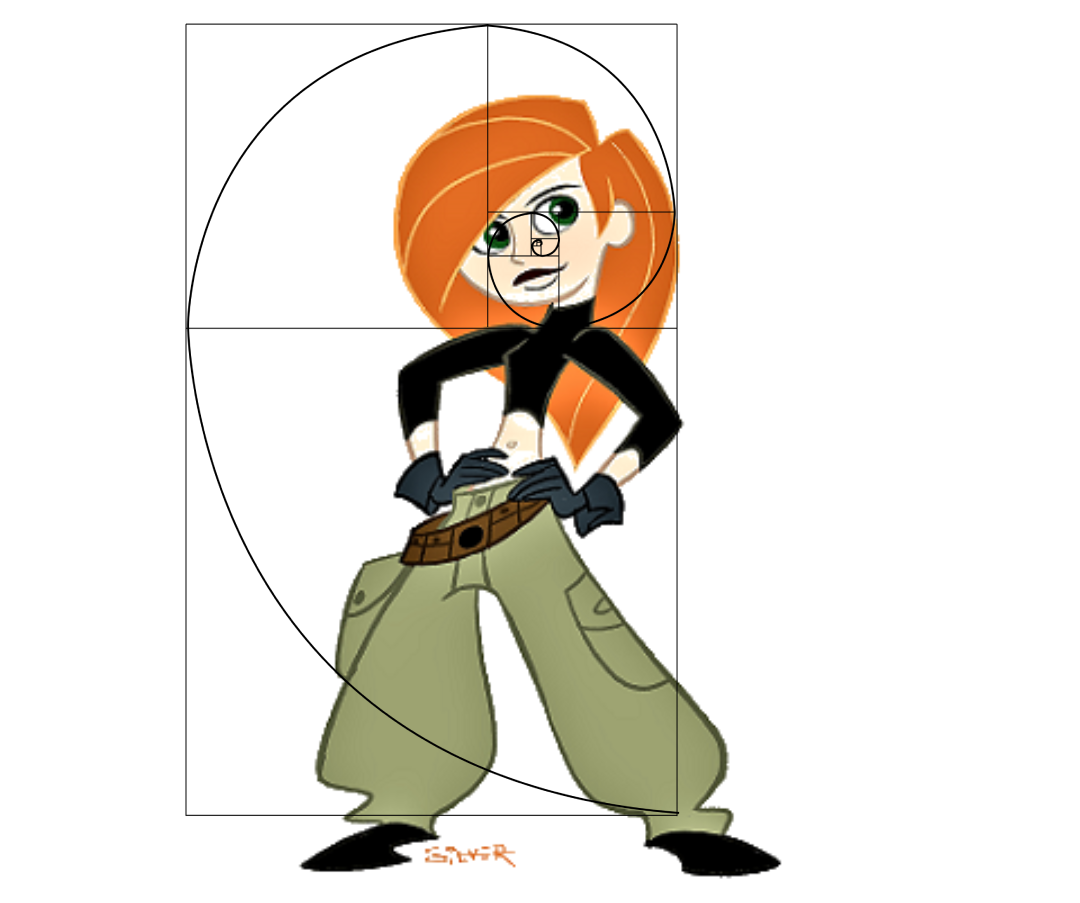
🔍 Analyzing Silhouettes

Now that you’ve learned a few character design tricks, take a look at the silhouettes of some of your favorite characters. What shape language is going on there? Are they symmetrical or asymmetrical? Do any of them use the golden ratio?
By analyzing the silhouettes of successful character designs, it becomes easier to apply these learnings to your own work. So next time you sit down to draw, don’t forget to think about silhouette—your designs will be more memorable for it! 💪
Are you an aspiring character designer? You need Believable Character Design, the masterclass by Mooncolony Art Director Alex Pascenko. Get access to industry secrets and learn professional skills in this online course ⚔️




.svg)



.svg)
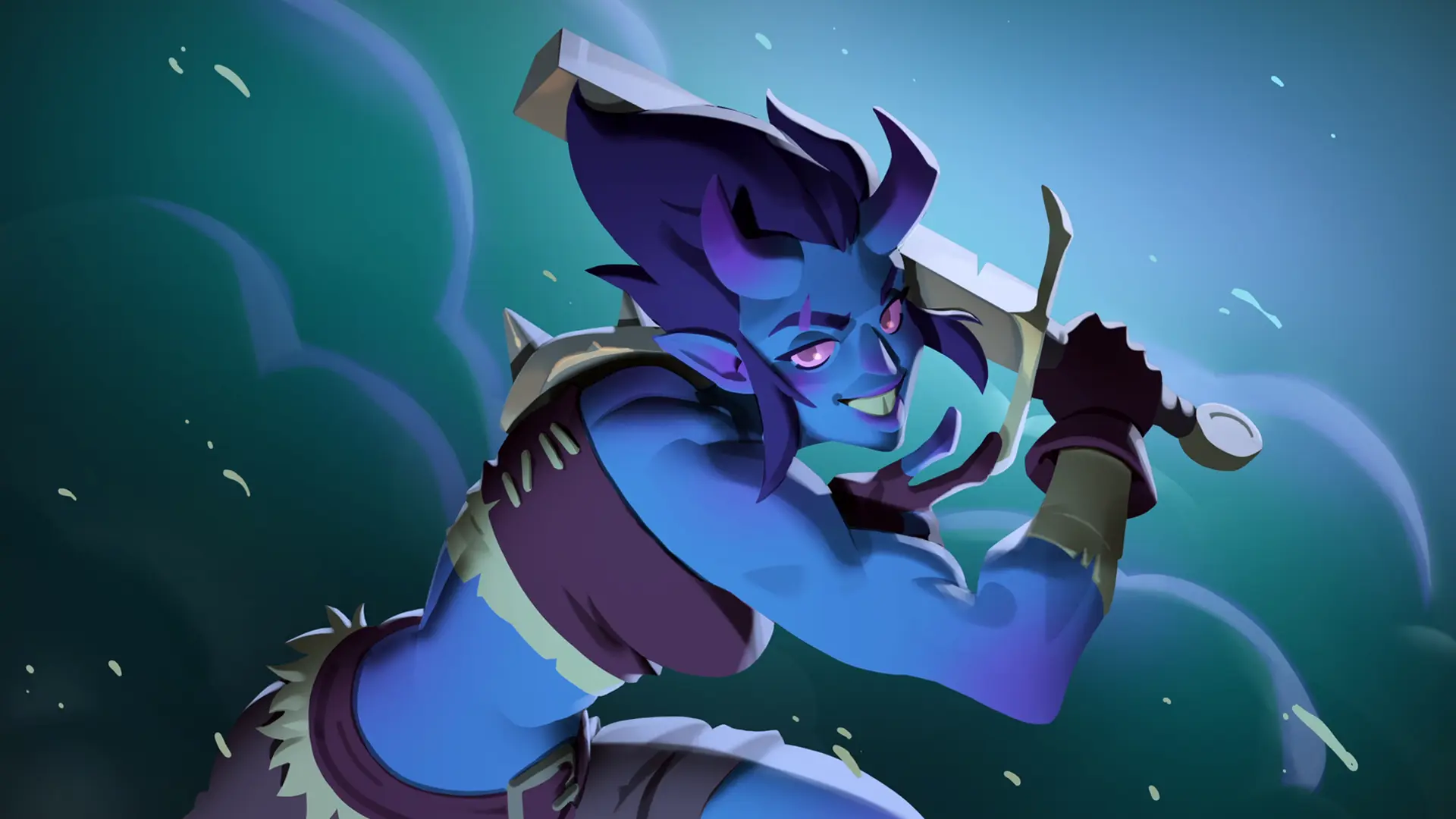

.svg)







